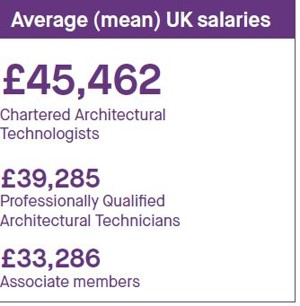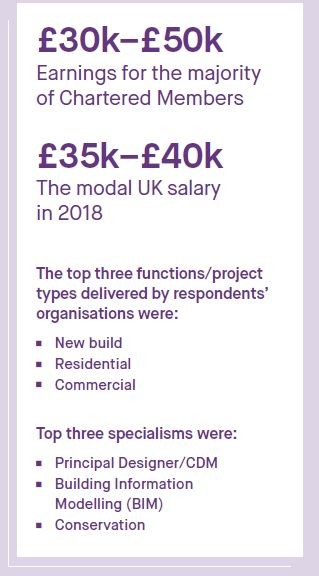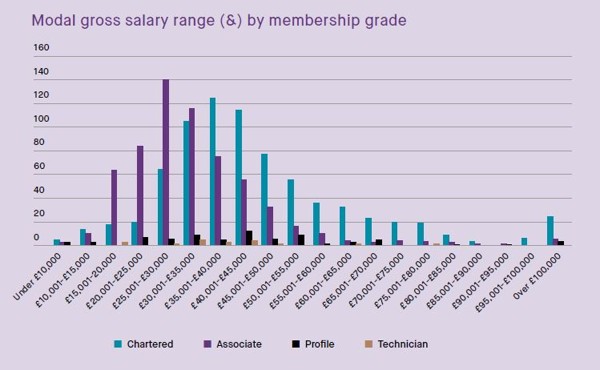Salary Survey 2019 – Results
The key objectives of the survey were to:
- support members to benchmark their remuneration accordingly by their employers and map career development path to higher earnings;
- improve our ability to inform and report to current and future Architectural Technology professionals of their potential earning capability;
- inspire members to progress within CIAT and its membership structure;
- utilise data for promotion via all relevant mediums on the profession and demand from industry for our members; and
- external promotion campaigns and purposes.
Demand
The need and demand for the Architectural Technology discipline and professionals maintains its continued growth nationally and internationally, with Chartered Architectural Technologists enjoying near full employment.
Over 91% of respondents across all grades are in full time employment and 75% of Chartered and Associate members work within the Architectural Technology/architectural practice sector.
Challenges
However, there are challenges ahead. There is concern in the built environment sector surrounding the impact of the Brexit impasse and the ongoing skills shortage in the sector, which will worsen if skilled EU citizens face greater barriers to working in the UK.
Academia and industry face the challenge of addressing the industry's skills gap and must collaborate more closely in order to respond to the needs of the sector and society. As an Institute, we continue to endorse and promote inclusive and accessible routes to a rewarding career within the discipline, which include the Government's Trailblazer apprenticeship scheme.
As well as tackling the skill shortage, a change in culture within the sector is needed immediately – complacency must become unacceptable and people should be aware that events similar to the Grenfell tragedy are still possible. The long-term and significant implications to the industry following the publication of the Independent Review of the Building Regulations and Fire Safety will affect the whole industry, and CIAT is actively involved as one of the lead professional bodies within the Review.
Similarly, CIAT has had significant input into the Cole Report (Scotland) following the construction failures at a number of schools in Scotland. Both tragic events highlight the critical need for holistic and collaborative working in our sector.
Future
Looking ahead, Architectural Technology professionals should continue to enjoy the high rates of employment, diverse global opportunities and rewarding careers. Architectural Technology professionals bring a unique and invaluable set of knowledge, competence, experience and professionalism to each project and should quite rightly be able to demand a remuneration which is in line with their professional peers based on the expertise they bring to the project.

Trends and opportunities
Two emerging job roles for Architectural Technologists with a healthy remuneration package were:
- Design Manager
- BIM Manager/Co-ordinator
The majority of Associate members and profile candidates agreed that qualifying with CIAT would help raise their profile and have a positive impact on their future earning capacity and current remuneration. 25% of surveyed employers reported finding AT/CIAT qualified staff was fairly easy. This is supported further by the Institute's job board, AT|jobs.

Salaries breakdown by membership grade
The chart below details members' modal earnings across all grades, and it shows that the majority of Chartered Members earnt between £30,000-£50,000 and Associate members earnt between £25,000-£40,000.
The modal UK salary in 2018 was £40,000-£45,000. In comparison, the global modal salary of all members in 2012 was £35,000-£40,000.
5% or more increase in their salaries in the past year was reported by:
- 19% of Chartered Members
- 27% of Associate members
- 42% of profile candidates
31% of surveyed Chartered Architectural Technologists also said their salary had increased as a result of being qualified by the Institute.

